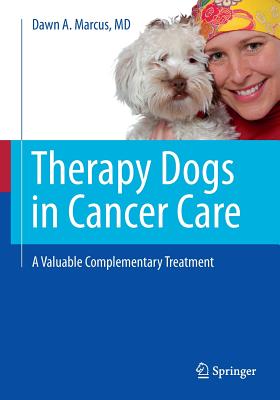You are here
Back to topTherapy Dogs in Cancer Care: A Valuable Complementary Treatment (Paperback)
Description
1. Cancer overview
a. Cancer statistics
b. Modifiable cancer risk factors
i. Physical activity
c. Cancer-related symptoms
i. Psychological distress
1. Mood disorders
2. Stress
3. Isolation and loneliness
4. Significance of stress and isolation on cancer progression
ii. Fatigue
iii. Pain
1. Impact of cancer pain
d. Complementary cancer treatment
i. Therapy dogs in cancer care
e. Summary
2. Introduction to therapy dogs
a. Animal-assisted therapy vs animal-assisted activities
i. Example of successful animal-assisted therapy for cancer patients
b. Differentiating working dogs: therapy dog vs service dog
c. Medical studies evaluating benefits from therapy dog visits
i. Limitations with therapy dog studies
ii. Patient benefits from therapy dog visits
1. Mood enhancement
2. Pain relief
3. Loneliness reduction
iii. Benefits for patient supporters and caregivers
d. Physiological impact from dog visits
i. Neurochemical changes
ii. Immune markers
iii. Stress response
e. Ethics of dog therapy
i. Physiological changes in dogs working as therapy dogs
f. Summary
3. Dogs as cancer detectors
a. Medical alert dogs
i. Companion dogs alerting to cancer
ii. Dogs trained to alert doctors to cancer
b. Olfactory ability of dogs
c. Explaining the physiology of cancer sniffing
i. Volatile gas detection in lung cancer
1. Detecting lung cancer using smellprints
ii. Volatile gas detection in breast cancer
iii. Volatile gas detection in skin cancer
iv. Volatile gas detection in brain cancer
d. Experimental studies testing cancer-detection abilities in dogs
i. Lung and breast cancer
ii. Bladder cancer iii. Prostate cancer
iv. Colorectal cancer
v. Ovarian cancer
e. Summary
4. Dog therapy with cancer treatment
a. Overview of therapy dog impact in cancer care
i. Prospective research
ii. Anecdotal reports
b. Therapy dog visits when coping with a cancer diagnosis
c. Therapy dog visits during inpatient care
i. Therapy dogs for inpatient pediatric cancer treatment
ii. Therapy dogs can make a home away from home
d. Therapy dog visits before testing or treatment
e. Therapy dog visits during chemotherapy
f. Therapy dog visits during end-of-life and hospice care
i. End-of-life support for secondary survivors
g. Therapy dogs relieve staff stress
i. Example of indirect patient benefits from changes in staff and patient visitors
h. Summary
5. Adding therapy dogs to your cancer treatment team
a. Establishing a therapy dog program
i. Model oncology therapy dog program
ii. Recommendations for making visits
b. Identifying appropriate dogs
i. Breed, size, and age requirements
ii. Therapy dog sixth sense
c. Guidelines for dog-handler teams
d. Selecting appropriate patient candidates for visits
e. Infection precautions with therapy dogs
i. Human colonization with MRSA
ii. Infection transmission between humans and pets
iii. Minimizing spread of infection between dogs and humans
iv. Visiting patients in intensive care or isolation
f. Example of a typical therapy dog visit during cancer care
g. Successful programs caring for cancer with therapy dogs
i. Cancer Caring Center at the University of Pittsburgh
ii. Pets at Duke
iii. Angel Foundation's Kids Kamp
h. Summary
6. Incorporating companion dogs into cancer rehab: emotional support
a. Overview of companion dogs' role during cancer treatment
b. Dogs relieve stress
i. Cardiovascular reactivity decreases with companion dogs
ii. Therapy dog visits reduce stress for patients and their caregivers
c. Dogs can provide emotional and social support
i. Cancer patients may feel emotionally isolated from human support network
ii. Companion dogs as social capit.
About the Author
Dawn A. Marcus, MDUniversity of Pittsburgh, Pittsburgh, PA, USA

